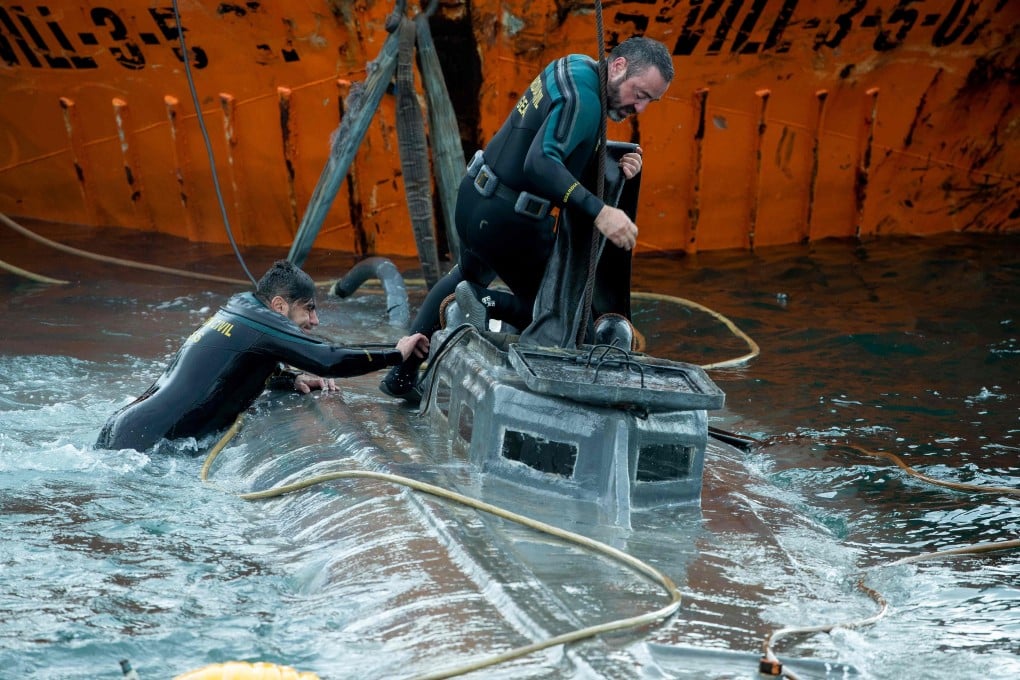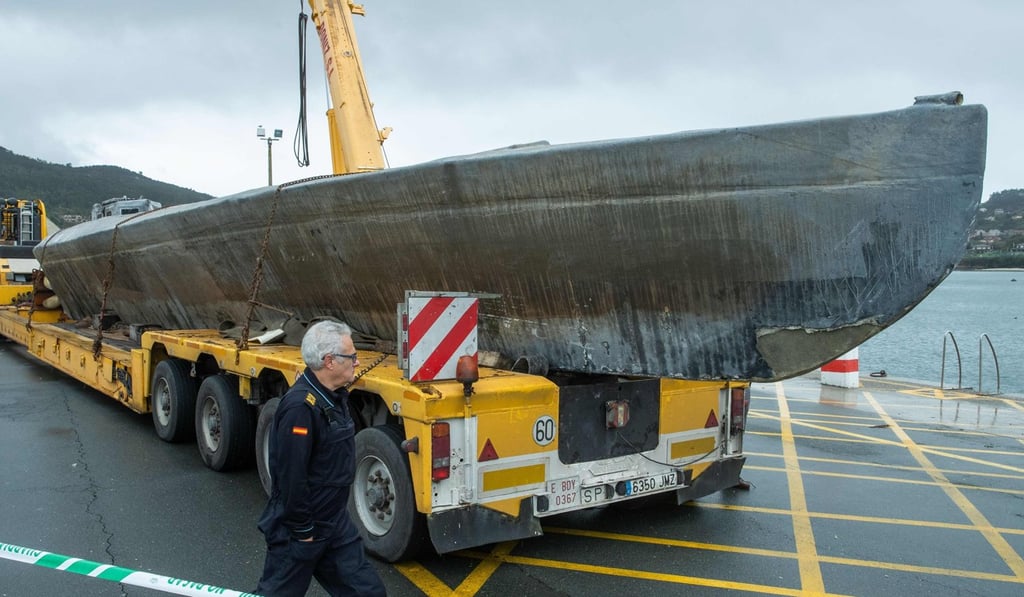Three tonnes of cocaine found on ‘narco submarine’ seized by Spain
- ‘Historic’ operation leads to first capture of underwater craft attempting to smuggle narcotics into Europe
- Drugs with street value of US$110 million found in 152 bundles

A submarine seized off the Spanish coast over the weekend was carrying three tonnes of cocaine worth €100 million (US$110 million), officials said.
Police intercepted the 20-metre (65-foot) submarine - thought to be the first of its kind captured in Europe - off the northwestern region of Galicia on Saturday.
They were only able to determine the amount of drugs inside after they managed to refloat the vessel three days later and tow it to a nearby port.
They found 152 bundles containing three tonnes of cocaine, Spanish police said in a statement on Wednesday.
While traffickers, especially from Colombia, have been caught using submarines to transport cocaine into Mexico and the United States, police said Saturday’s seizure was “the first time that this system of transporting drugs has been detected in Europe”.
